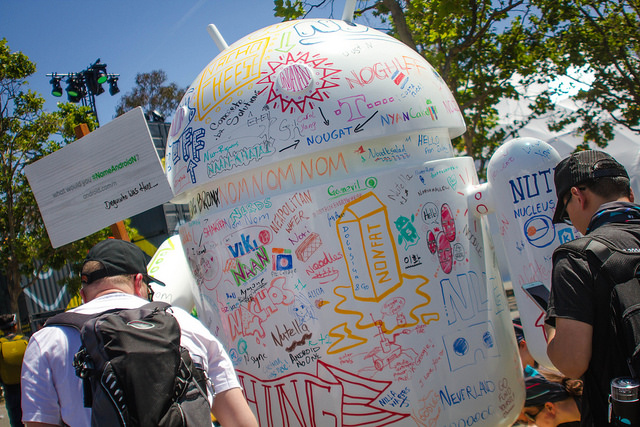Like this article? rabble is reader-supported journalism. Chip in to keep stories like these coming.
Last week, Google held its annual I/O developers’ conference. As is the case with a lot of such events, the first day’s keynote is meant more for the press and general nerd public than for the developers themselves. The Google faithful got to deep dive into the weeds later, during the serious coder sessions.
Google announced a lot of fascinating stuff, but two things really jumped out for me:
- The smartphone-based VR platform it announced, Daydream, could be huge and should make Apple nervous.
- It is going all-out on leveraging every ounce of its natural language and search data and experience.
It’s no surprise that Google is serious about VR. Its inexpensive and smartphone-based Google Cardboard viewer was probably the way most folks tried virtual reality for the first time. But, starting with the upcoming Android N, the search giant plans to make VR an integral part of its operating system. They’re calling that VR layer Daydream. And it’s releasing smartphone requirements and a reference design for a serious VR headset. Major players like the New York Times, Ubisoft and Netflix appear ready to bring their content to the immersive world Google is planning.
All that means that by the end of the year the company may well leapfrog other VR platforms like Oculus Rift, Viv and Gear VR in bringing 3D worlds not just to gamers but to a wider variety of users. Yes, it will still mainly attract the interest of tech enthusiasts, but the developments announced last week are pointing to a faster route to the mainstream than its competitors have demonstrated.
By the way, conspicuously absent from the VR-for-folks race is Apple, which has yet to demonstrate any VR equipment nor mention any VR plans. However, from recent hires we know the company is exploring the space. Traditionally Apple has waited until competitors have released gadgets, watched carefully and then moved in with an elegant, simple solution the mainstream embraces.
This time, though, time is not on Apple’s side, especially since Google is starting to show some design chops. It used to be the case that Apple could sit on the sidelines a bit because the products its competitors pumped out were ugly and complicated. But Google is getting some taste just at a time when observers think Apple is starting to slip on the design front.
Google also announced a homebody personal assistant called Google Home. The roly-poly popcan-sized gadget is going head to head with the Amazon Echo. But, unlike the Echo, it gets its smarts from Google’s natural language parser, named Parsey McParseface. It has taken Google a decade and billions of words, phrases and real-world knowledge to get its machine-learning algorithm tuned to a best-of-breed level. Now it’s leveraging that algorithm here in Google Home and in another product it announced last week, Allo. Allo is a messaging app designed to compete with iMessage, Line, Whatsapp and other software that allows users to share conversations, links, pictures and GIFs. But Allo also allows those users to talk right to Google’s AI.
That sounds a lot like bots from Facebook and Microsoft, and those are precisely the bots Google is aiming at. But, Google will be able, if anyone can, to make their AI truly useful and capable of understanding the nuances and context of conversations. It can even scan a picture a user sends in Allo and offer response suggestions to the receiver. That feature will probably be ignored by most users, but it points out what Google can do because of scanning and learning from millions of images in Google Photos.
Keep in mind that Google has shipped exactly zero of the gadgets and services it demoed last week, and won’t until later this year, if then. There are still lots of ways the company could stumble and disappoint. But, the one thing that did manage to deliver was a clear shot across the bow to all comers. If Apple and others thought 2017 was going to be a cakewalk, they may soon discover that was just a daydream.
Listen to an audio version of this column, read by the author.
Wayne MacPhail has been a print and online journalist for 25 years, and is a long-time writer for rabble.ca on technology and the Internet.
Photo credit: Ken Yeung/VentureBeat/flickr
Like this article? rabble is reader-supported journalism. Chip in to keep stories like these coming.



